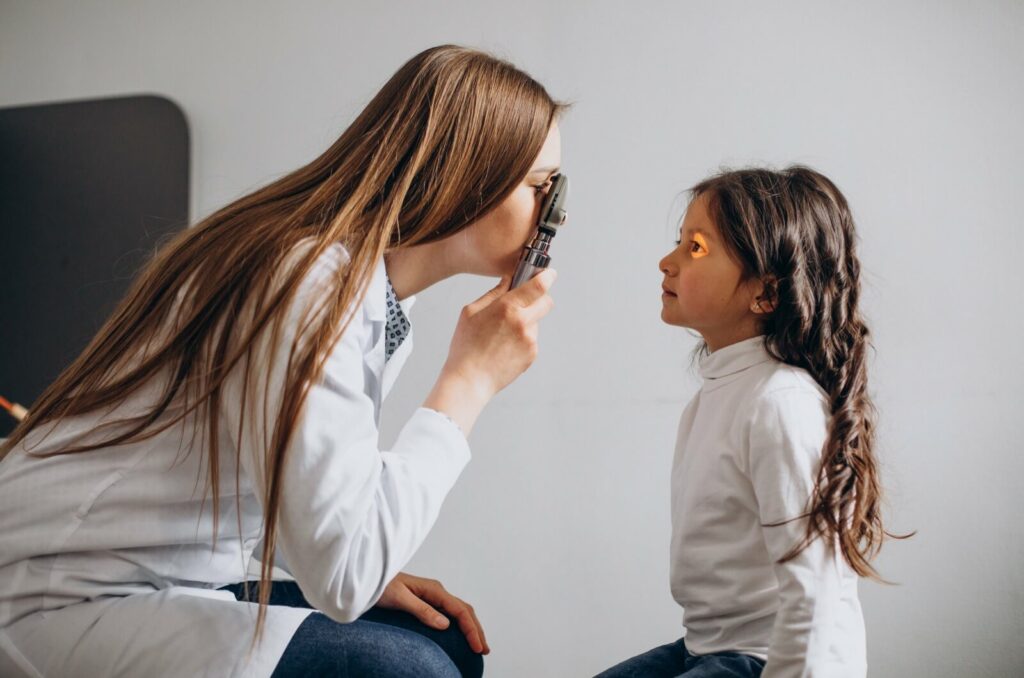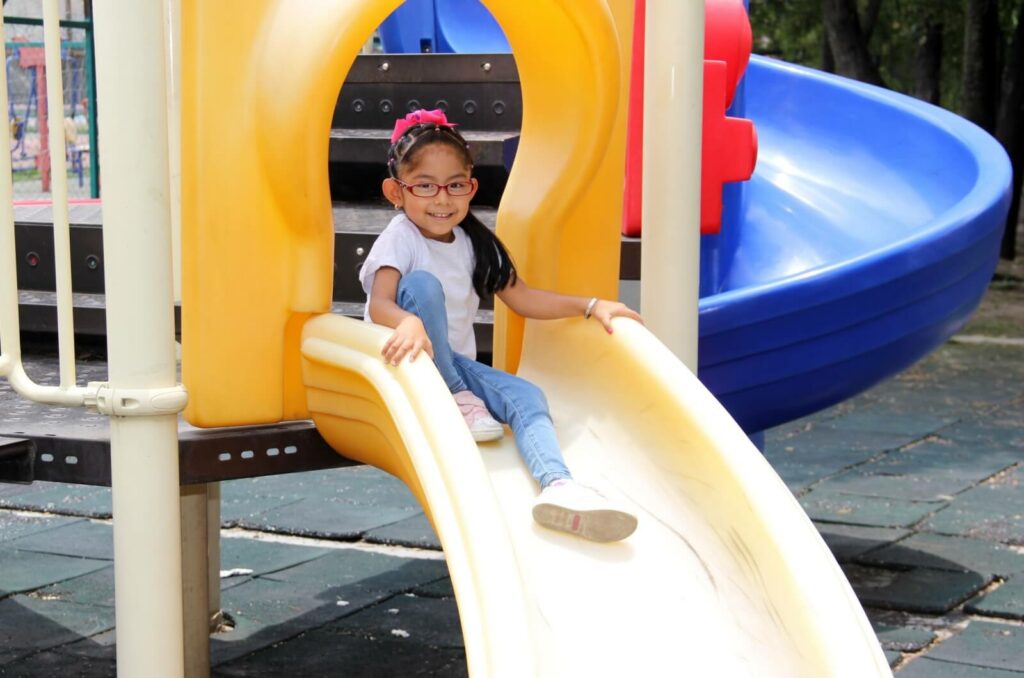Childhood myopia, or nearsightedness, is becoming a growing concern for many parents worldwide. With the increasing use of screens, less time spent outdoors, and other lifestyle changes, more children are experiencing rapid progression of myopia.
But is there anything that can be done to slow myopia progression? Thankfully, there are several ways it can be helped. 5 tips to slow myopia progression in kids include:
- Encourage outdoor activities with natural light exposure
- Balance screen time and take regular breaks
- Have regular children’s eye exams
- Wear specialty glasses or contact lenses
- Treatment with atropine eye drops
What Is Myopia?
Myopia is a common vision condition where distant objects appear blurry while close objects can be seen clearly. It occurs when the eyeball is too long or the cornea is too curved, causing light rays to focus in front of the retina (the light-sensitive tissue at the back of the eye) instead of on it.
Understanding Myopia & Its Progression in Children
In children, myopia often begins between the ages of 6 and 14 and can progress rapidly. Genetics plays a role in the development of myopia. However, environmental factors like prolonged screen time and inadequate outdoor activities also contribute. Understanding these factors can help parents take measures to manage their child’s eye health.
The Impact of Childhood Myopia
Childhood myopia not only affects academic performance but also impacts a child’s overall quality of life. Parents should be alert to the following signs of myopia in children:
- Blurred distant vision
- Squinting
- Sitting too close to the TV
- Difficulty seeing the board at school or participating in sports
- Eye strain
- Tired or sore eyes
When myopia progresses, it can lead to high or severe myopia. High myopia increases a child’s risk of serious eye conditions later in life, such as:
5 Tips to Slow Myopia Progression in Kids
Early detection is key to managing myopia effectively. Regular eye exams are essential in diagnosing and monitoring myopia progression for timely interventions. Here are 5 tips to slow myopia progression in kids.
- Encourage Outdoor Activities
One of the most effective ways to slow myopia progression in children is by encouraging them to spend more time outdoors. Children who spend more time outdoors have a lower risk of developing myopia.
Because myopia progression results when the eyeball keeps growing too long from front to back, exposure to natural light during outdoor play helps reduce myopia progression by regulating eye growth. This lifestyle change can make a difference in your child’s eye health.
- Balance Screen Time & Take Regular Breaks
With the increasing use of digital devices, managing screen time is essential in slowing myopia progression. Screen time is often unavoidable, but balancing it with outdoor play is crucial. Encourage your child to take breaks and enjoy nature to get the benefits of both worlds.
Establishing a screen schedule with regular breaks can make a significant difference. Encourage your child to follow the 20-20-20 rule during homework, gaming, and other screen-related activities. The 20-20-20 rule recommends that for every 20 minutes of screen time, your child should take a 20-second break to look at something 20 feet away. This practice helps relax the eye muscles.
- Have Regular Children’s Eye Exams

Regular eye exams are essential in monitoring myopia progression and ensuring timely interventions. Early detection and treatment can make a significant difference in managing myopia effectively. Schedule routine eye exams for your child at least once a year or more frequently if your eye doctor recommends it.
- Wear Specialty Glasses or Contact Lenses
Early intervention with glasses can slow myopia progression. Myopia control glasses can help by slowing the eye’s elongation.
Contact lenses, such as specialty contact lenses, alter how light enters the eye and focus on different parts of the retina to control eye growth in myopia progression. Your eye doctor can provide personalized recommendations for glasses or contact lenses based on your child’s needs.
- Treatment with Atropine Eye Drops
Atropine eye drops are a commonly prescribed treatment for slowing myopia progression in children. These low-dose eye drops work by dilating the pupil and temporarily relaxing the eye’s focusing mechanism, which helps to reduce strain and control myopia progression.
Atropine eye drops can be used with other treatment strategies to manage childhood myopia. Talk to your child’s eye doctor if atropine eye drops may be a beneficial addition to their myopia management plan.
Early Intervention for Myopia Control
Taking proactive steps to manage childhood myopia can significantly impact a child’s eye health and overall quality of life. By encouraging outdoor activities, implementing the 20-20-20 rule, scheduling regular eye exams, and early intervention with myopia control strategies, you can help slow myopia progression in your child.
Don’t wait—early action is key. Adopt these tips today and give your child the gift of clear and healthy vision for years. For more personalized treatment methods, book an appointment with EyeQ Optical.




